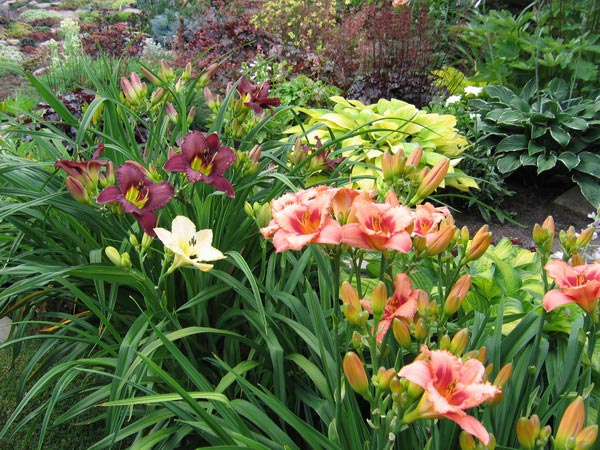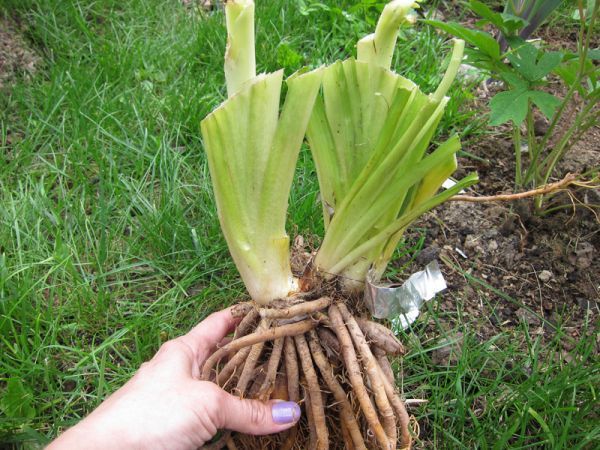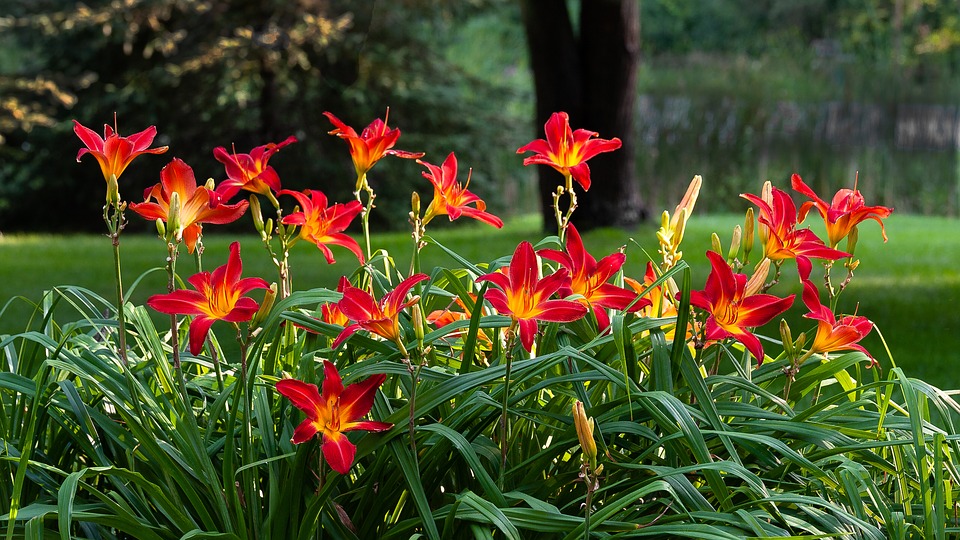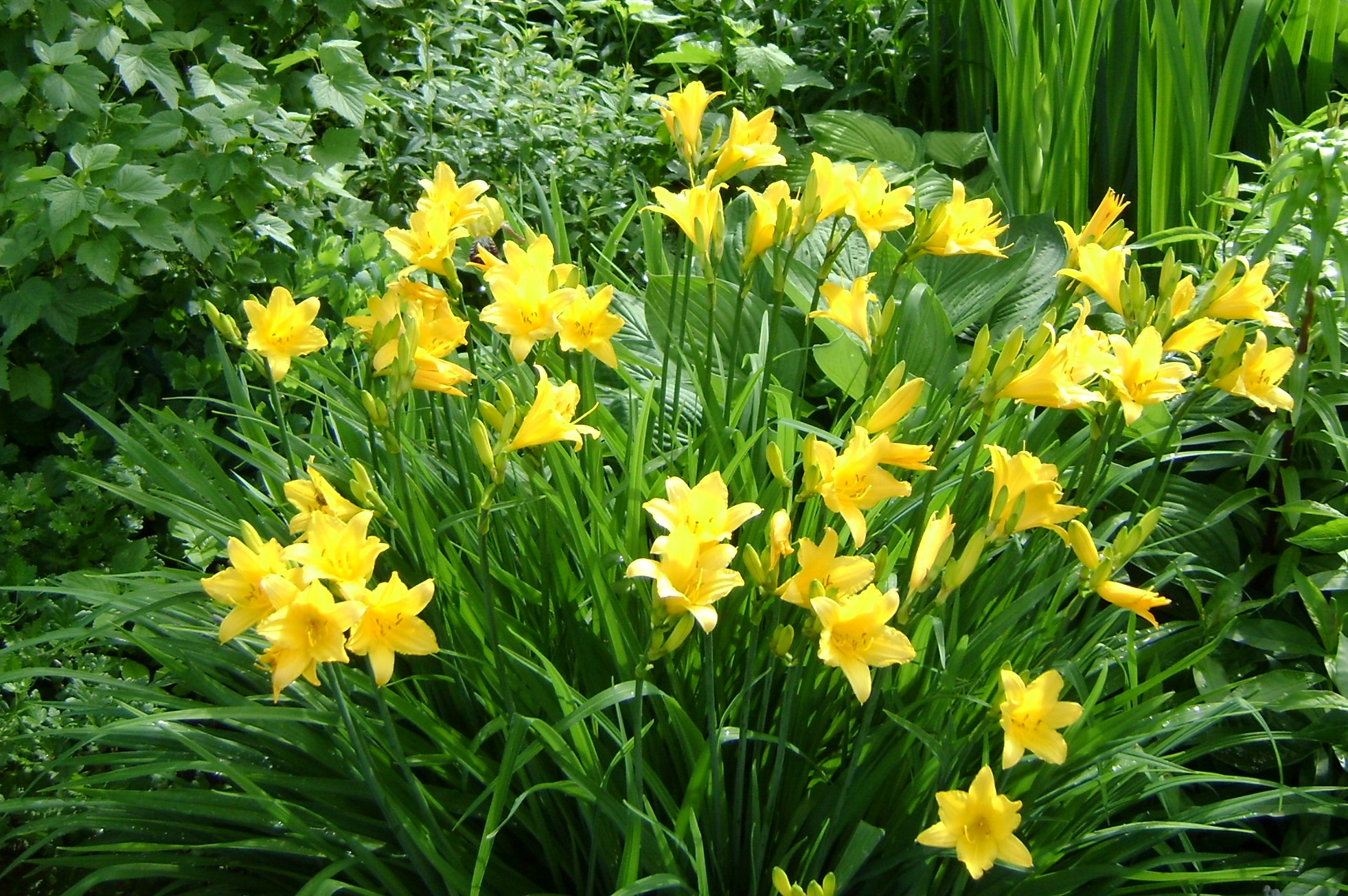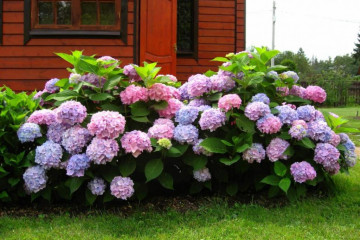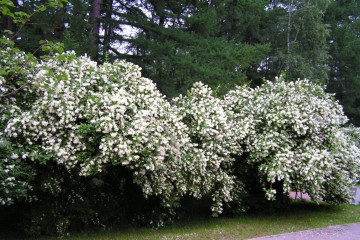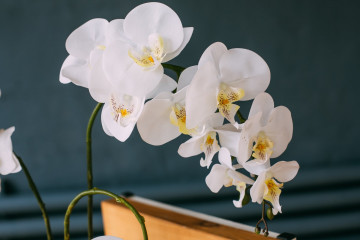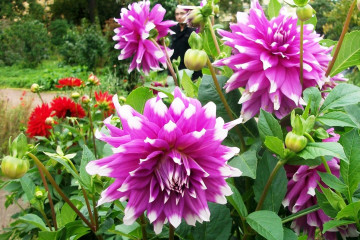Why the daylily does not bloom and grows poorly
Content:
Daylily is loved for its beauty, both flowering and lush greenery. But sometimes you only have to admire the foliage, never waiting for the beautiful flowers. There are many reasons for this behavior of the flower. This could be due to a violation of the landing conditions. Timely and lush flowering also depends on proper care in the process of plant development, its protection from diseases and pests. To determine why the daylily is not blooming, you should check all possible causes.
Wrong boarding time
The daylily bush can be planted from early spring to mid-autumn. Important features of planting in different periods of the year:
- Due to planting in early spring, a large increase in green mass can occur. The bush will be busy growing greenery and will postpone budding for next summer. Often, these bushes bloom two years after planting.
- When disembarking in the summer, you need to pay attention to the weather. If it's hot and dry, the bushes will dry out. To remedy the situation, you need to shade the young plant from the scorching rays and water it regularly.
- In the fall, the flower must be planted before the rainy season, since the roots of the daylily are prone to putrefactive diseases. Planting too late will not allow time for root growth and the plant will die.
The optimal planting time for each region is different. For central Russia, this is mid-October. For a month, one and a half before the first frost, the bush manages to take root and get stronger. He does not need to spend energy on the growth of green mass, since the plant is preparing for a dormant period.
Can the recently planted daylilies bloom? A seedling bought in the same climatic zone where it will grow further will be accepted faster and without difficulty. Such daylilies can bloom in the year of planting only under conditions of proper care. If the bush is foreign or the care is wrong, adaptation will last 1-2 years.
Landing too deep
Often, after planting, the question arises why the daylily is not growing. Perhaps he is too deeply set. In this case, it grows poorly and does not throw out the buds at all. The plant will be able to bloom only after its root collar rises closer to the surface.
Improper watering
The surface roots of the daylily do not have the ability to take moisture hidden in the depths of the soil. In this regard, it is necessary for the plant to maintain a moist regime:
- The spring charge of moisture will be the impetus for active growth and the release of buds.
- In the summertime, watering saves from the heat.
- In the fall, watering is reduced, as this can provoke root rot.
Watering should be regular, up to 4 times a week. How much water to pour under the bush depends on its size and weather conditions.
Excess or shortage of fertilizers
The fertilizer supports the growth and flowering of the daylily. Since the beginning of spring, many gardeners have been feeding the plant with nitrogen fertilizers. For a daylily, this procedure should be done very carefully. The bush can switch to the mode of active growth of green mass, which will be the reason why the daylily has not bloomed.
When the plant throws out the buds, phosphorus and potassium should prevail in its complementary foods.These minerals provide nourishment and enhance the color of the lily.
Not enough storage
Under favorable growth conditions, the culture grows very quickly. Five years later, a flower bed with a radius of 1 meter grows in place of a young seedling. The root system is shallow and dense. The daylily fills the entire space underneath with its fleshy roots. Due to the density of the roots and lack of nutrition, the adult plant begins to bloom poorly, and when the daylily blooms, its buds are small and the petals are thin. Over time, it may stop blooming altogether.
Lack of sun
The reason why the daylily does not grow may be the shadow. When choosing a place in the garden, it is important to consider that the daylily will not bloom if:
- It is planted in the shade of trees or tall shrubs.
- The flower bed is located next to buildings or fences.
- The planting was under sheds or vineyards.
Lighting for the daylily is important from the beginning of its awakening until the very cold weather. So that the sun's rays do not burn the plant in the midst of the summer heat, during this period the bush must be watered after sunset.
Diseases and pests
Daylily is practically not attacked by pests. Incorrect care provokes the appearance of diseases or parasites on an exotic bush.
In terms of health, the main weak point of a plant is its roots. The fleshy, thick roots of the daylily collect a lot of moisture inside themselves. Its excess quickly leads to decay of the root mass. This can result in root rot or soft rot of the root collar.
Fungal diseases usually affect the green part of the plant. The leaves begin to turn yellow at the tips, and over time, the process covers the entire leaf plate. Sometimes spots or stripes of yellow-brown color appear on the foliage. The only way out is to remove all damaged foliage.
Parasites that can settle on a flower include:
- aphid;
- thrips;
- spider mite.
The most effective method of dealing with them is preventive treatment. It is important to do this regularly and according to instructions.
Fleshy roots and stems attract slugs and snails to the bush, and sweet inflorescences are eaten by beetles and bronze beetles during the growing season. Gardeners are fighting these pests in folk ways, processing shrubs with infusion of garlic, mustard or hot pepper.
Plant resuscitation
Why does the daylily not bloom, what to do and how to quickly help it? Regular examinations and observation of the flower help in time to notice the incipient fungal infection or rotting of the roots. It is important to monitor the reaction of the shrub after fertilizing, watering and replanting. After finding the cause of the problem, the care of the plant should be brought back to normal as soon as possible.
Daylily resuscitation, depending on the reasons:
- Before planting a plant, it is important to know the best period for planting a young seedling. In mid-autumn, a young seedling should not be flooded with prolonged rains or frostbitten by the first frosts. For the winter, it is better to mulch such an escape.
- If a mistake in planting a daylily was discovered the next year, in the spring the young seedling looks very weak. It is necessary to strengthen its care: remove weeds in time, treat diseases and pests, water it correctly and carefully apply fertilizers. In order for the plant to take root well in a new place, it can be fertilized with solutions for growing the root system. The reanimated bush will bloom no earlier than in two seasons.
- A too deep fit is easy to check by digging out the root collar. If the daylily has gone deep into the ground, you need to transplant the seedling.
- Improper watering is important to adjust as soon as possible before the plant dies. It is necessary to observe the young bush, since the irrigation scheme depends on the type of soil, the size of the bush and weather conditions.
- It is better to underfill nitrogen fertilizers than to overfill. If the buds did not appear on time, you need to transplant the plant into a new substrate. Otherwise, the bush will grow violently green mass without releasing a single flower. Phosphate fertilizers can cause the plant to discard the buds.
- If the daylily grows too densely, you need to thin out the shrub. When young shoots are planted in another place, the mother bush needs to renew its nutrition by replacing the soil layer.
- In the absence of flowering due to shading, you will have to transplant the bush to a sunnier place.
- In the fight against diseases and pests, preventive treatment every spring and in the middle of the season is the ideal solution.
Daylilies rarely show their "character" in terms of flowering. If it does not bloom, then the reason is really serious. To find out what is the matter when the daylily grows poorly, it is better before planting it, having studied the conditions for the growth of the culture. This will help get rid of many problems and hassle in flower care.
